|
LeRoy LaCelle - Designer of a Dynasty
|
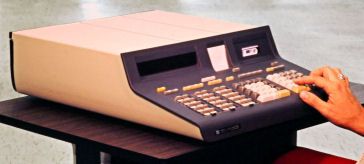
|
|
HP 9821A desktop calculator prototype
designed by Leroy Lacelle.
Image courtesy of Fred Wenninger
|
|
It’s a big jump from developing a future Cincinnati cityscape to developing the new look for a line of desktop computers, but that’s precisely the jump LeRoy LaCelle made between 1970 and 1972. LaCelle earned a BFA in industrial design from Michigan State University in 1965 and an MS in product design from the Illinois Institute of Technology in 1966. He began his design career working in Chicago for Mel Boldt and Associates as a product designer. He moved east to Washington, DC to work for Harold Lewis Malt on the Cincinnati urban renovation. LaCelle then jumped to the American Sterilizer Company (AMSCO, bought by Steris in 1997) in Erie, Pennsylvania where he helped to develop medical products. Finally, he answered an ad in ID (Industrial Design) magazine for a product designer job at HP Loveland. He joined the company three weeks after his interview, in July, 1972. “It was like going to God’s country” says LaCelle.
LaCelle’s first design project at HP’s Calculator Products Division in Loveland was the industrial design of the HP 9821A desktop calculator, which replaced the HP 9820A’s magnetic-card drive with the HP 9830A’s digital cassette tape drive. The HP 9821A was the last of the second-generation desktop calculators. It had extruded aluminum sides, a metal chassis, and an injection-molded plastic front panel and bezel like HP’s earlier 9810A, 9820A, and 9830A models. The succeeding generation of machines including the HP 9825A and HP 9845A based on HP’s 16-bit hybrid microprocessor would all use structural foam-molded plastic cases, which LaCelle had used previously in several product designs at AMSCO.
|
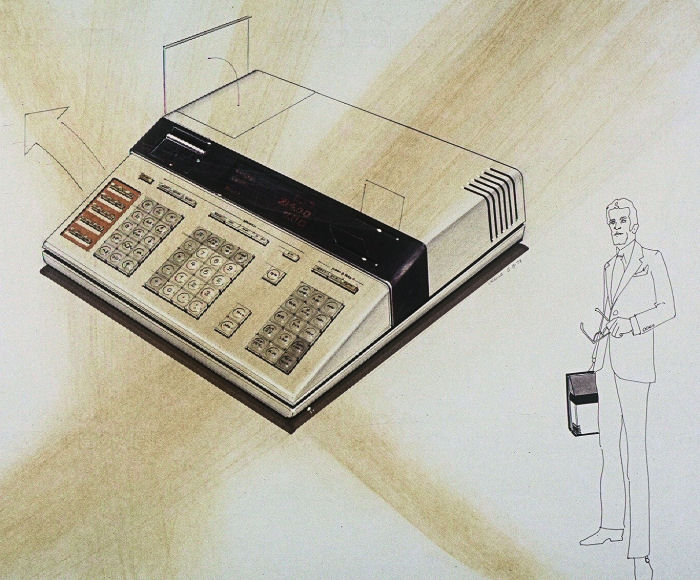
|
|
Early HP 9825A concept rendering looking very calculator-like. This machine has three numeric display lines (one large, two small), similar to the 3-line numeric displays on the HP 9100 and 9810 desktop calculators. Image courtesy of LeRoy LaCelle.
|
|
LaCelle became involved in a wide range of diverse disciplines in conjuring the industrial design of the HP 9825A including ergonomics, use models in the market, mechanical product design, service issues, airflow and cooling, and color design (the Calculator Products Division got special dispensation from HP Corporate in Palo Alto to develop a special color palette for the new desktop calculators). Like many people associated with the HP 9825A development, LaCelle feels that the HP 9825 project marked a turning point in his career because it gave him the opportunity to learn more—to push his own envelope.
HP 9825A foamcore mockup showing internal board stacking details and I/O card configuration. Image courtesy of LeRoy LaCelle
|
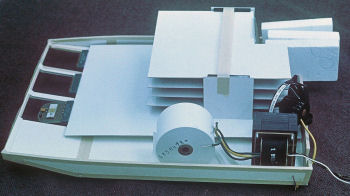
|
|
The HP 9825A design went through many iterations, as illustrated by the drawings on this page. The calculator/computer started with a simple wedge shape, a 3-line display, and a key-per-function keyboard. It quickly evolved. The 3-line display, an echo of similar displays on the HP 9800 and 9810 calculators, became a single-line alphanumeric display. The early wedge-shaped case-design concept forced unacceptable compromises on the angle of the keyboard (poor hand position) and display (glare and reflection). These issues surfaced after construction of a full-size mockup, so the machine developed a more complex side profile to position these critical user-interface components properly. The dark stripe that visibly marked the area of the display, tape drive, and printer disappeared, replaced by more complex case details.
|
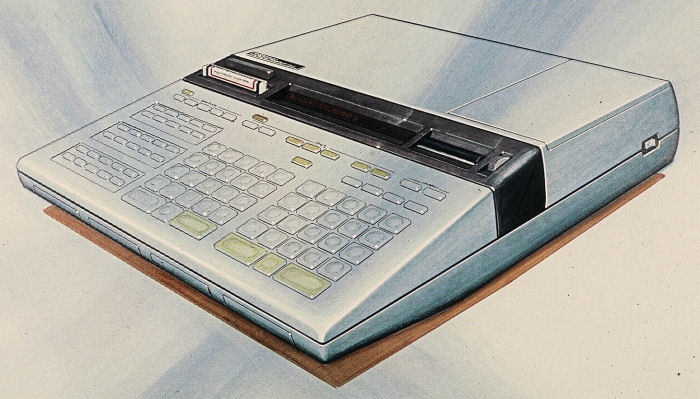
|
|
Early HP 9825A concept rendering. This machine has an alpanumeric display but the early key-per-function keyboard. The large, dark stripe visually broke the machine into three sections. This design detail was not used in the HP 9825A design but was used in the industrial design of the HP 9845A. Image courtesy of LeRoy LaCelle.
|
|
|
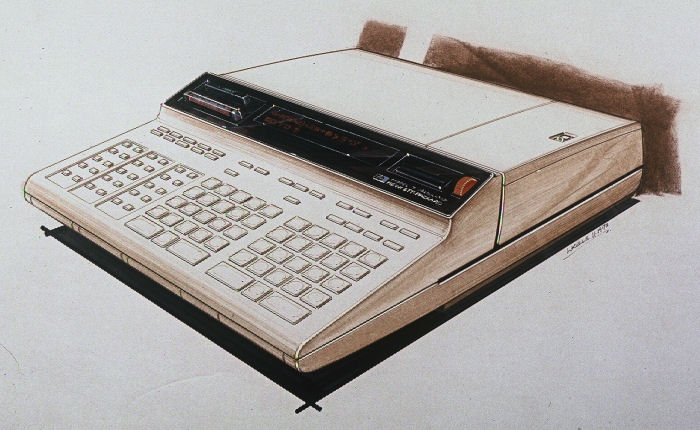
|
|
Early HP 9825A concept rendering. This machine has the final lines of the HP 9825A but retains the early key-per-function keyboard. The large, dark stripe of the previous designs has been replaced by a dark surround around the machine’s tape drive, printer, and alphanumeric display. Image courtesy of LeRoy LaCelle.
|
|
|
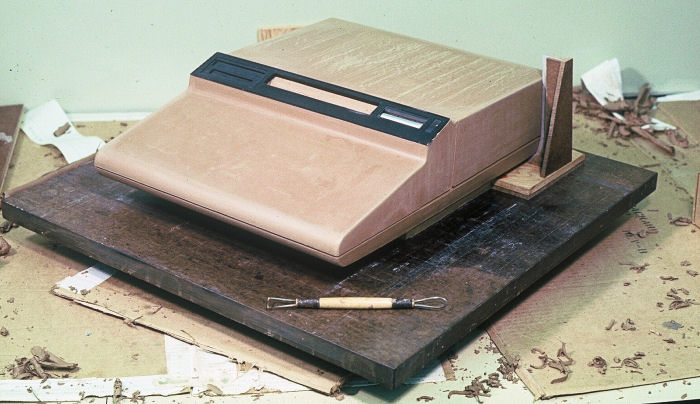
|
|
Clay model of the HP 9825A with the lines and layout of the final design. Image courtesy of LeRoy LaCelle.
|
|
Finally, the HP 9825A, which had started out as a key-per-function machine, got a full alphanumeric (QWERTY) keyboard, but LaCelle’s design accepted the change in stride. LaCelle also developed the highly stylized I/O card design for the HP 9825A. The I/O cards for HP Loveland’s earlier machines (HP 9810, 9820, and 9830) were not much more than simple, gray rectangular boxes. LaCelle’s I/O cards have a far more complex, modern, and appealing look to them. LaCelle was awarded design patents for the HP 9825A case design (D245,810 and D249,090) in 1977 and 1978. The HP 9825A’s industrial design won an award from ID Magazine in 1977 and appeared in Design Review, ID Magazine’s 23rd annual roundup of the world’s best examples of industrial design.
|
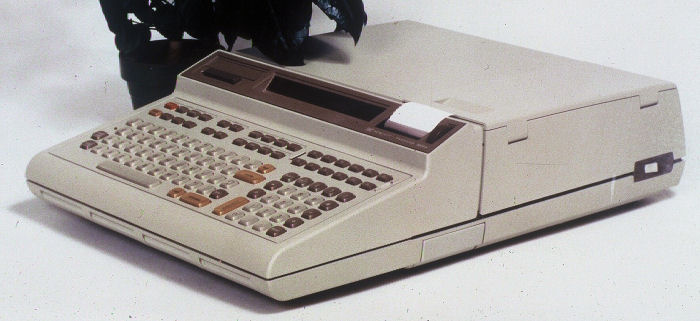
|
|
Early production copy of an HP 9825A with its structural-foam case and original “cricket” keyboard. Unlike most of the technological innovations on the HP 9825A, the “cricket” keyboard did not prove durable and was later replaced with a more conventional computer keyboard made by Cherry. Image courtesy of LeRoy LaCelle.
|
|
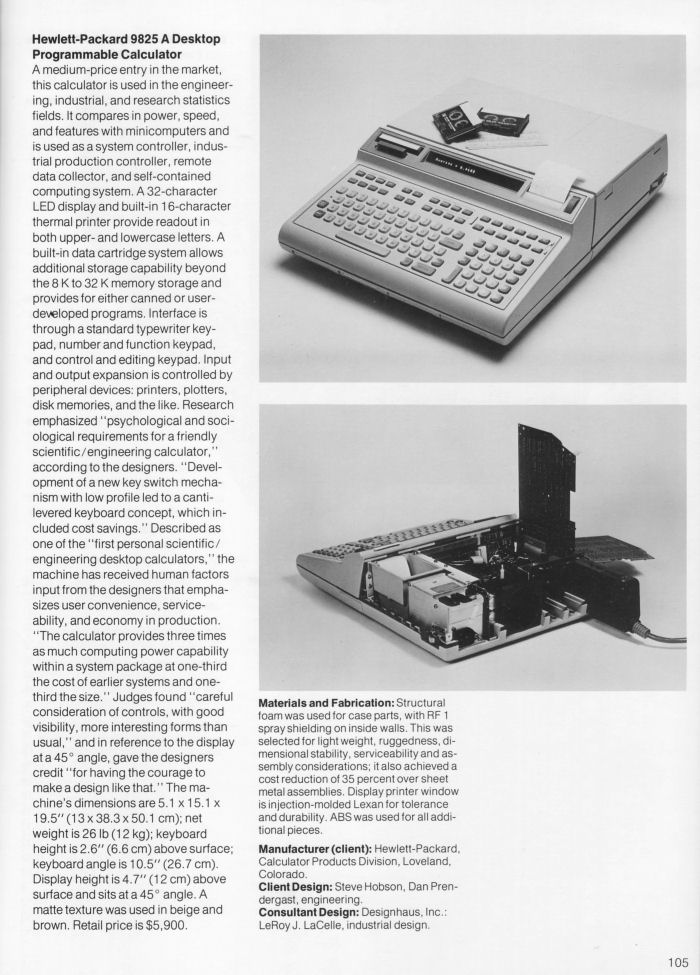
|
|
This page on the HP 9825A appeared in Design Review #23, ID Magazine’s annual roundup
of the world’s best-designed products for 1976.
|
|
After tackling the HP 9825A, LaCelle then worked on the industrial design of the larger HP 9845A. It had far more complex requirements including dual fans (for better cooling) and a CRT display. Early drawings of HP 9845A concepts show the CRT display grafted to a body that closely resembles the HP 9825A. However, the two processors, dual tape drives, and integral page printer called for a much larger design. In addition, the CRT-on-case design positioned the display much too low and at a poor viewing angle. The final design of the HP 9845A desktop computer placed the CRT on two pylons, raising the display to a proper height and allowing a 5-degree negative tilt of the display to cut reflections from overhead lighting. The complexity of the HP 9845A case design and the need to hold tolerances on all of the case parts resulted in HP building a structural-foam molding plant, located just down the street from Loveland’s Great Western sugar-beet factory.
|
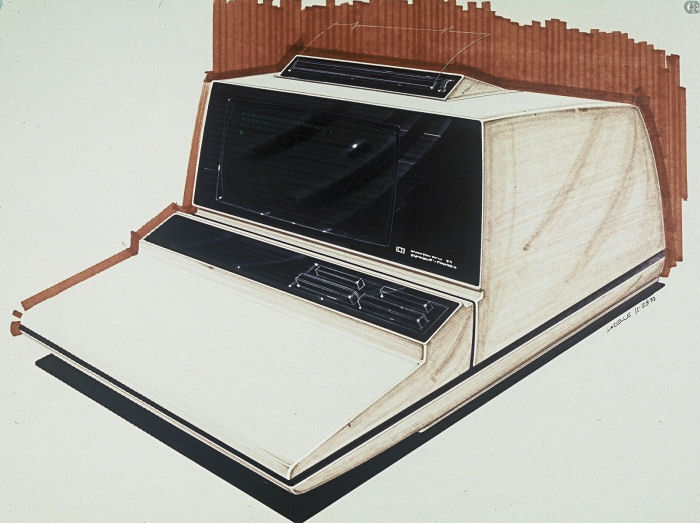
|
|
Early concept drawing of an HP 9845A. Note the dual tape drives, CRT display, and page printer. The CRT position proved inadequate and support pylons were added to the final design so that the display would be at the right height.
Image courtesy of LeRoy LaCelle.
|
|
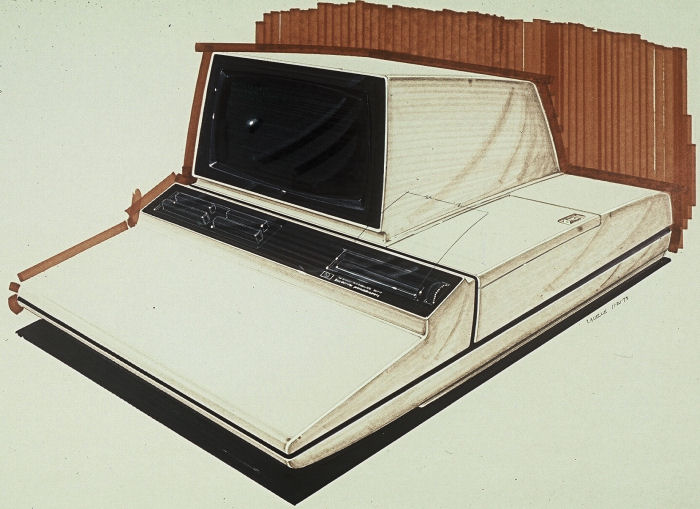
|
|
Another early concept drawing of an HP 9845A with a smaller CRT display and printer. Image courtesy of LeRoy LaCelle.
|
|
LaCelle left HP in 1976 and started his own design firm, Designhaus. He’s done stints at other design firms since then but has now gone back to running his own firm near Seattle.
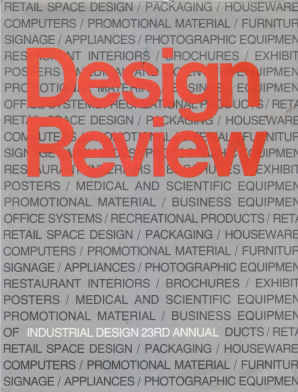 References References
The information on this page is based on interviews and email intechanges with LeRoy LaCelle and from:
Ann Nydele, Design Review: Industrial Design 23rd Annual, Whitney Library of Design, Watson-Guptill Publications, 1977.
|